|
Post 4 of "Better Health through Better Eating From the Bounty Box!" by Mi Ae Lipe, Author, Bounty from the Box: the CSA Farm Cookbook. More Info: /blog-author---mi-ae-lipe.html [Photo by Oksana Kuzmina, Dreamstime.com] As we head into the New Year, our thoughts may be turning to eating better and spending more quality time with our families. A great way to accomplish both is to cook more at home and involve our children in the kitchen. Learning how to plan meals, shop for their own food, and properly prepare it helps our kids—and ourselves—to be healthier. It also provides great lessons that will serve them their whole lives! Here are some ideas for engaging your children in the kitchen:
[Photo by Sonya Etchison, Dreamstime.com]
Holiday Blessings and Happy New Year! [Photo by zoryanchik, Dreamstime.com] Salade Niçoise
Serves 4 Do not toss this salad; it should look arranged. This Riviera favorite goes best with vinaigrette dressing. You don’t have to cook much—just boil the eggs and potatoes and steam the green beans (or pick them up at a salad bar for a no-cook meal). Then open a can and a couple of jars, chop, stir, assemble, and it’s done. It’s a fun finger-food meal for kids too! Serve with good sliced French bread, warmed or toasted, and maybe even a chilled dry rosé wine. ½ pound green string beans 4 small red or white potatoes 1 head Boston or red leaf lettuce 1 (6-ounce) can albacore or other high-quality tuna, drained 3 to 4 tomatoes, quartered, or 1 cup cherry tomatoes, halved 2 to 3 hard-boiled eggs, peeled and halved 1 green or yellow bell pepper, seeded and cut into thin rings 16 to 20 herbed black olives (Niçoise olives are the classic choice) 2 tablespoons capers 8 anchovy fillets (optional) Salade Niçoise Vinaigrette 1 tablespoon white-wine vinegar 1 tablespoon fresh lemon juice ½ teaspoon Dijon mustard 1 clove garlic, minced Pinch of fresh tarragon or basil Salt and freshly ground black pepper ½ cup extra-virgin olive oil
1 Comment
Post 3 of Series "Better Health frough Better Eating From the Bounty Box" by Mi Ae Lipe, author of Bounty from the Box; The CSA Farm Cookbook. More Information: /blog-author---mi-ae-lipe.html [Photo caption: Jack Hedin, owner of Featherstone Farm in southeastern Minnesota, checking on carrots in the field. Photo courtesy of Featherstone Farm.] This essay is written by Jack Hedin, owner of Featherstone Farm, one of the largest organic vegetable farms in southeastern Minnesota. As consumers of supermarket produce, we have grown accustomed to eating pretty much any vegetable or fruit all year-round, rather than waiting for certain crops to come into season. This concept of eating something in season and what this means to me as a farmer—pulling leaves off broccoli, eating green beans at different times of the year, harvesting the perfect radish—grows increasingly important as the years pass. To me, seasonality is not just when something is available, but when it is good, and dependably so. Weather, climate, and soil conditions enormously impact the quality of both fruits and vegetables. We humans tend to perceive the seasons as how we experience weather when we are out and about (always during the day). Plants, on the other hand, experience seasons as night and day: dew sets that occur because of humidity, moisture, wind (or the lack of them), and temperatures. In particular, here in southeast Minnesota, temperature differences during the day and night can range in June from 45 degrees Fahrenheit at night to 86 degrees during the day. In August, that nighttime temperature might not get below 70 degrees. Moisture in the field and how soil and its organic matter retains moisture in the root zone are also extremely important factors. Dewfalls play critical roles too. Every single morning in August, the fields will be completely soaked. When the sun rises, even if it is brightly shining, its solar energy goes first into drying things out, not into the leaves to make energy, Such fluctuations really affect how a melon ripens in the field, for instance. Squash and melons need accumulated heat to ripen. That means that they do not start to ripen until all of their leaves are dry, so those dewfalls in the valley hugely impact how these crops develop. Having worked on farms in California, I often think in terms of the conditions of where a crop is grown in that agricultural state, where so many different microenvironments exist. Here in our valley in southeastern Minnesota, the nightly dew sets mimic the coastal fogs of California’s heavily cultivated Salinas Valley, which is why we grow so much leaf lettuce and broccoli. Both prefer cool soils and plenty of moisture. One of the most striking examples of the divide between the consumer perception of seasonality and actual seasonality occurs with radishes. When we come to the farmers market in June, everyone lines up to get radishes because they are psyched up for it. [Photo by Baloncici, Dreamstime.com] What is happening in the field, however, is that the lengthening days are causing the radishes to grow so fast in May and June that they get pithy and hollow inside. When the soil reaches above 65 degrees, the roots lose crunch, juiciness, and sweetness, and turn very spicy. What people perceive as peak radish time in early June is, in my mind, a pretty risky season. Although radishes can be good at this time, what I believe people are really responding to is the lack of fresh fruits and vegetables during the previous six or eight months. They are not necessarily looking for radishes; they are seeking something good, and even though these radishes might be fresher than those from California, they are nothing like the fall radishes we harvest. In September and October, the radishes are growing so much more slowly. The nights are cooler, and we get unbelievably good radishes at this time of year; they are what I think of as an in-season radish. But this timing is so contrary to what most people think about radishes. The same is true for lettuce. Our initial goal was to cultivate all of the leaf lettuce one could eat during the entire growing season, which runs from May 20 to November 1. But the lettuce is superb for only a short time, between May 20 and June 20. After that, we do not grow lettuce in July and August, for it quickly turns bitter once the soil becomes hot and dry. Yet another example of seasonality occurs with broccoli. Because of our scale, we do not want to grow many acres of a certain crop until we know it will have a high success rate. In the case of broccoli, we need 80 to 90 percent of our crop to have both high eating quality and be aesthetically superior. Here in southeastern Minnesota, it is possible to harvest broccoli every day from June 20 to November 10. But broccoli loves cool weather and even frost; if the temperatures are not falling below 30 degrees at night, it won’t be as sweet. As a result, our broccoli is best only about eight to ten weeks of that time, from about September 10 to October 20. Broccoli could be in every CSA basket during the summer and fall, but in times of hot days, warm nights, and dry soil, it will be stringy and tough. If it looks any good at all, the heads are likely to be bitter. Even though we could sell and market it, this poorer-quality vegetable is not what we want to promote as a grower. ______________________________________ [Photo by fortyforks, Dreamstime.com] Roasted Root Vegetables from Greta’s Kitchen
Serves 6 In the dead of winter in much of the country, it can be a little hard to get a good, crisp, sweet radish grown locally. But this recipe uses daikon, a type of Japanese radish that has a longer, more year-round season (in fact, it is sometimes grown as a winter cover crop). If you can’t find daikons, no need to worry—this hearty dish is delicious with any sort of root vegetable in season. This recipe is courtesy of Greta Sikorski of Featherstone Farm in Rushford, Minnesota. Note: Bragg Liquid Aminos is a liquid protein formula derived from soybeans; it makes a great savory seasoning alternative to soy sauce, which contains gluten. To make a totally gluten-free gravy, substitute potato starch for the regular wheat flour, and use Bragg instead of soy sauce. 3 pounds various root vegetables, including carrots, potatoes, beets, rutabaga, turnips, parsnips, celeriac, and daikon radish, peeled and chopped into ½-inch cubes 2 tablespoons olive oil 2 tablespoons soy sauce or Bragg Liquid Aminos 2 tablespoons maple syrup Salt and freshly ground black pepper Fresh or dried thyme, to taste (optional) Grated ginger, to taste (optional)
— Recipe by Greta Sikorski of Featherstone Farm, Rushford, Minnesota, from Bounty from the Box: The CSA Farm Cookbook "Better Health tthrough Better Eating From the Bounty Box!" Series - Post 2 by Mi Ae Lipe, Author Bounty from the Box; The CSA Farm Cookbook. More Info: /blog-author---mi-ae-lipe.html [Photo by Grondin Franck Olivier, Dreamstime.com] Life can be a lot easier if you prepare certain ingredients in advance; you can pull out these items on busier weeknights when you don’t have as much time to assemble everything from scratch. Here are some suggestions for getting—and staying—organized in the kitchen:
[Photo by Voltan1, Dreamstime.com] Italian White Bean Soup
Serves 6 to 8 as a main dish You can prepare this simple but delicious winter soup ahead of time and freeze it in individual portions in zipper-lock bags. When you’re ready to eat, just thaw and heat a bagful. Serve it with a green salad, an artisan bread, and good butter. It will thicken on the second day. You can add water to thin it out, or serve it as-is for a side dish. ¼ cup flavorful, extra-virgin olive oil (Greek is good) ¼ to ½ cup chopped Italian or curly leaf parsley 3 large cloves of garlic, minced 1 pound cannellini beans, washed, sorted, soaked, cooked, and drained Salt and freshly ground white pepper
— Recipe by Marianne Streich, from Bounty from the Box: The CSA Farm Cookbook  About the Author: Mi Ae now resides in downtown Seattle near the world-famous Pike Place Market, regularly indulging in a favorite hobby—eating great food. A freelance editor and graphic designer, she has her own business, What Now Design, which helps authors and companies create books, marketing publications, and branding identity campaigns. She also lives another life as a traffic safety advocator, writing a blog called Driving in the Real World, dedicated to improving driver education and road safety in America. She is the author of a book recently published and currently available: Bounty from the Box: The CSA Farm Cookbook. It is your guide to enjoying more than 90 different crops grown by community-supported agriculture (CSA) farms across America. To find out more about Mi Ae click on: /blog-author---mi-ae-lipe.html
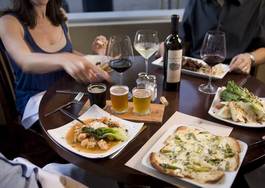 Up until a hundred years ago, most people ate foods that originated more or less the same way—grown or raised locally or from their backyards, with few or no pesticides, and cooked at home with no artificial preservatives or additives. Times have changed, of course. With the meteoric rise of Big Food and Big Agriculture starting in the early 20th century, the food scene in America and much of the rest of the world has changed profoundly. Not all of this is a bad thing—crop yields have increased enormously, a wider range of food is now available to more people at lower prices than ever before, and entire global economies have been created as a result. But havoc on unprecedented scales has also been created, much of it to the detriment of our health and our economy. Multinational food companies specialize in creating and marketing cheap, highly processed, low-nutrition products that are high in sugar, salt, and fat—and reaping billions of dollars from consumers of all ages, who pay the consequences with increased rates of obesity, heart disease, high blood pressure, and diabetes, plus the cost of treating them. Consider this: At least 85 percent of the food in your average supermarket is unhealthy for you. And if you eat this food exclusively for years, what kind of physical and mental suffering might you endure as a result of being not properly nourished? And how many of you reading this post are already experiencing these symptoms? There’s other issues at stake. American government farm subsidies reward those who grow commodity crops such as corn, wheat, and soybeans (often genetically modified) at the expense of smaller (often organic) fruit-and-vegetable farmers, who find it very difficult to survive because of a shortage of land and a market system that financially rewards monoculture on a massive scale. And billions of gallons of petroleum-based fuel are required to ship foodstuffs around the globe, contributing to global warming and its deleterious effects. For instance, it is estimated that at least 90 percent of the seafood that Americans eat is actually imported from farms in Asia and Europe, whereas the vast majority of our own delectable wild Alaskan salmon and Gulf Coast shrimp paradoxically is sent to Asia—quite the culinary irony. As consumers, we can and should do something about this. Our most powerful tools are our pocketbooks and personal will.
[Photo by Ilumus Photography, Adobe Stock] Dine out at restaurants that source their ingredients from local farms and producers. Let these places know that you appreciate and support their food policies.
______________________________________ Post 1 Recipe Smothered Greens with Turkey Serves 5 Traditionally, pork fatback would be used in this savory, slightly spicy dish, which uses a variety of winter greens like kale and collards. If you’d like to experience it, try the fatback—at least once! For a version that is more healthful, use the smoked turkey—it will flavor the dish beautifully as well. 3 cups water ¼ pound skinless smoked turkey breast, chopped 1 tablespoon minced fresh chile, such as jalapeño or serrano ¼ teaspoon cayenne pepper ¼ teaspoon ground cloves 2 cloves garlic, crushed ½ teaspoon fresh thyme 1 scallion (green onion), chopped 1 teaspoon ground ginger ¼ cup chopped onion 2 pounds greens (mustard, turnip, collard, kale, or a mixture)
— Recipe by www.Health.gov, from Bounty from the Box: The CSA Farm Cookbook 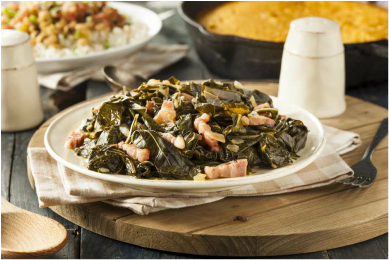 Photo by Bhofack2, Dreamstime.com |
Blog By Kate Olson Kate is a Hypnotherapist, NLP Practitioner & Trainer, Reiki Master, Energy Healer, Life Coach and more. To find out more about her or her work, click the links below:
Get Kate's Book & Journal!
Living in Joyful Resilience: A Roadmap for Navigating Life's Ups & Downs & Simple Soul Thoughts : Collecting Moments of Joy www.joyfulkate.com About the Blog After 4 years of featuring at least 1 guest Author a month this blog changed in 2020. I loved featuring the posts of other great people who also believe in mind, body, spirit wellness. I will continue to feature articles submitted to me on this topic that align with my own mission. However, finding & reaching out to others is time consuming and I do it for my radio show, Soul Talks and other groups and projects and so for this blog i will be ramping up my own posts and perspective. posting mostly my own blogs. I will be happy & excited to post articles from those who submit them to me. Archives
April 2022
Categories |
Proudly powered by Weebly

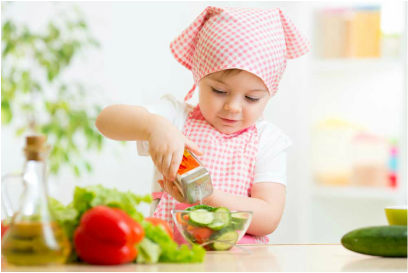
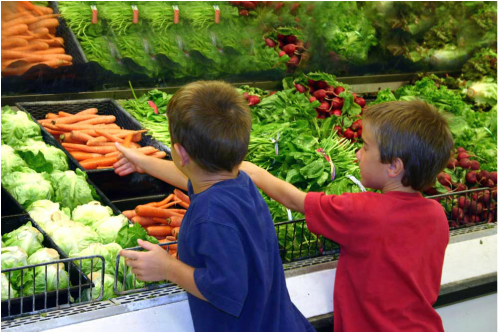
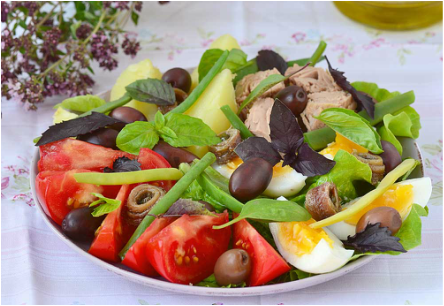
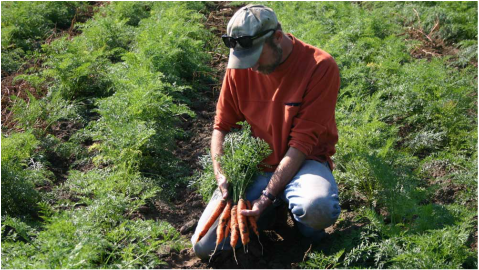
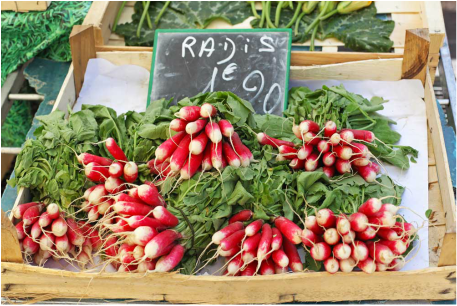
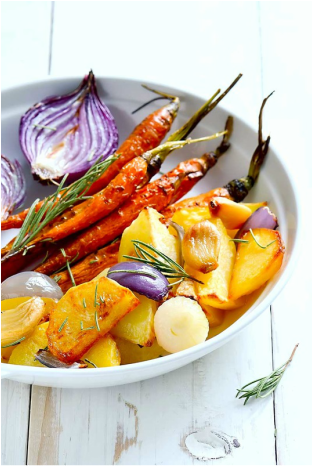
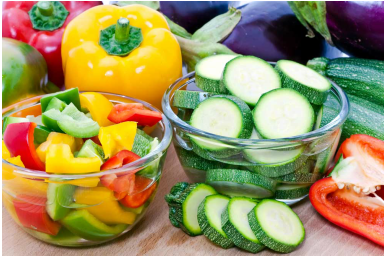
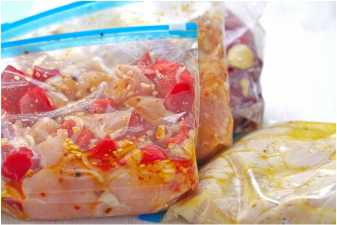
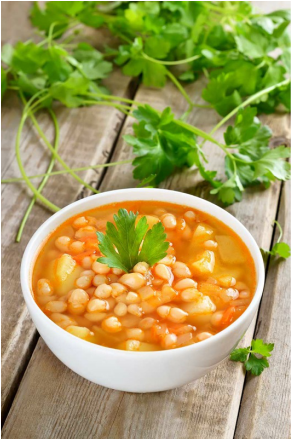
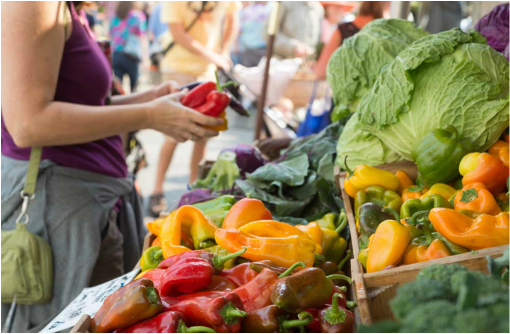



 RSS Feed
RSS Feed